Author: Alison (Ali) Sloop, Stormwater Compliance Specialist
Bee Campus Affiliate: James Madison University in Virginia. Affiliate since 2019
USDA Plant Zone: 6b
Our Top 5 Virginia Native Pollinator Plants:
- Rough-stemmed goldenrod (Solidago rugosa)
- Wild bergamot (Monarda fistula)
- Smooth serviceberry (Amelanchier laevis)
- Wild columbine (Aquilegia canadensis)
- Common milkweed (Asclepias syriaca)
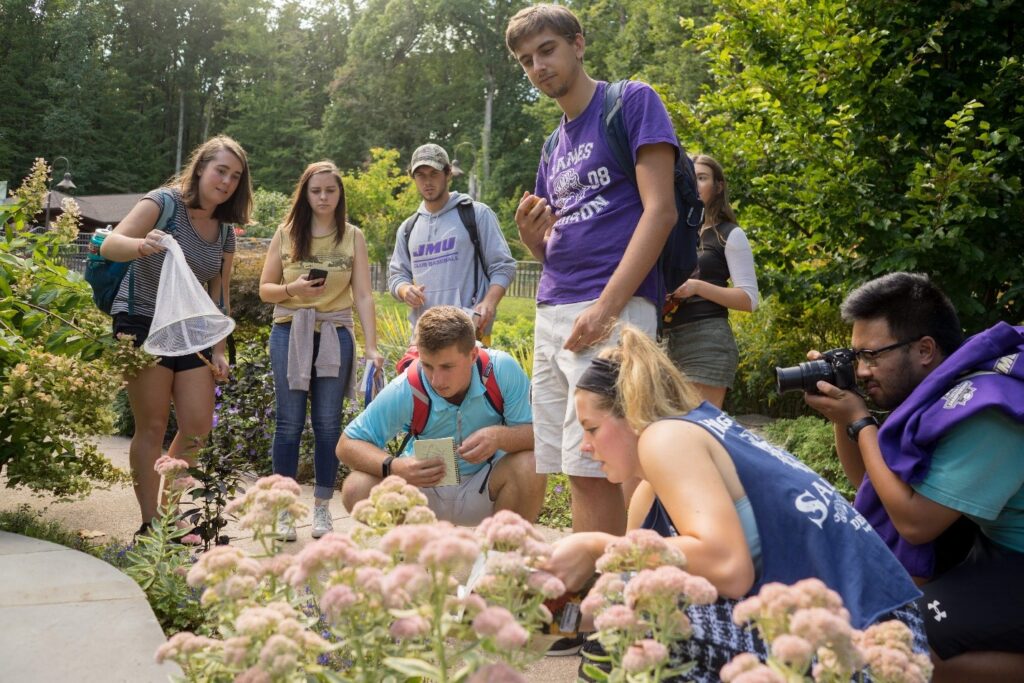
Beeing the Change: Equal Parts Intellect and Action for JMU’s Campus Pollinators
The first president at James Madison University, Julian Burruss wrote the below statement in the school’s first catalogue in the early 1900s, “… it is obvious that the work of the school can no longer be confined to theory and books, but must seek its material in real things, in nature, in the practical activities of industry and commerce, in the business, civic and social interests of life. Without depreciating the limitless stores of useful knowledge bound up in printed volumes, it must also draw from the outside world …”. This statement still holds true about JMU today, as the university has established the phrase “Being the Change” as one of four strategic priorities. As the Bee Campus Committee gathers information each year from campus departments, committee members and local partners to include in the annual report, it is easy to see how the student, staff and faculty at JMU continue to embody “Being the Change” using both intellect and action to create a positive impact on native bees, butterflies and other pollinators that call campus their home.
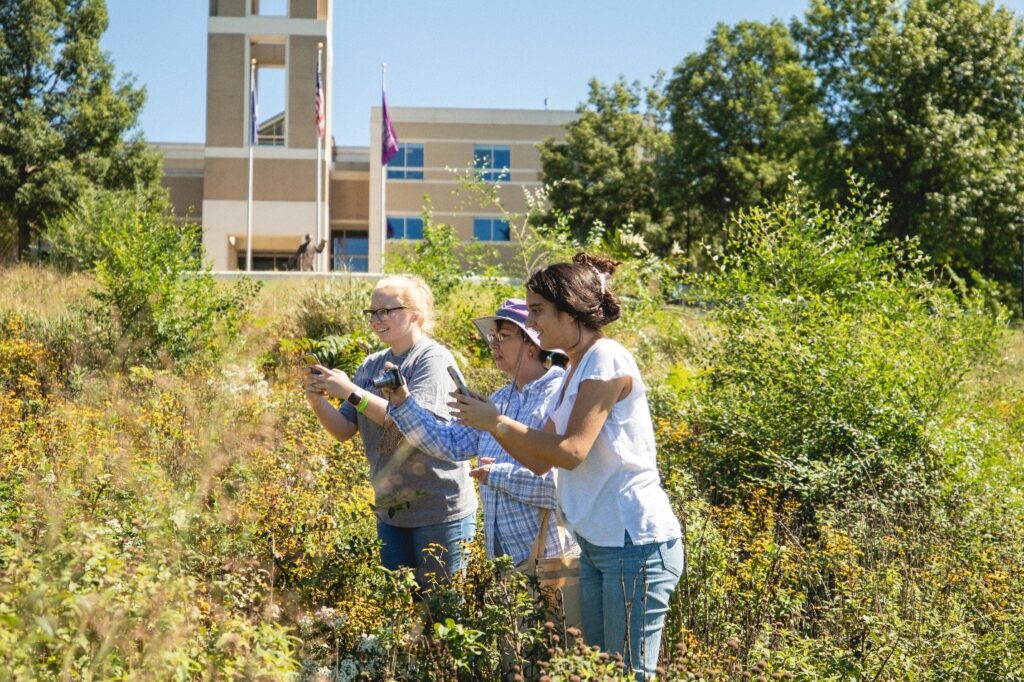
Every year, JMU faculty Amy Goodall, Ph.D. has had her class of Advanced Biogeography students participate in a week-long BioBlitz on campus to document pollinators. This year, Goodall and her students partnered with the City of Harrisonburg in a coordinated effort to log as many sightings of pollinators and native plants as they could in a month-long, Parks for Pollinators BioBlitz, event throughout the city. The pollinator habitat on campus (which lies within the heart of the City) and the students logging observations within that habitat were instrumental in the effort. The BioBlitz recorded over 2,500 observations, 490 species in the iNaturalist app and over 500 observers. The effort won the city $1,000 to go towards their pollinator programs. A monetary prize was given to the BioBlitz events across the nation that logged the top three highest numbers of observations. The National Recreation and Park Association created this campaign. This is one example of how students took what they learned in class and sprang into action. It resulted in numerous benefits to both the campus and the City, one being the economic award that will be utilized to increase pollinator habitat and continue to promote the conservation of pollinators to the local community.
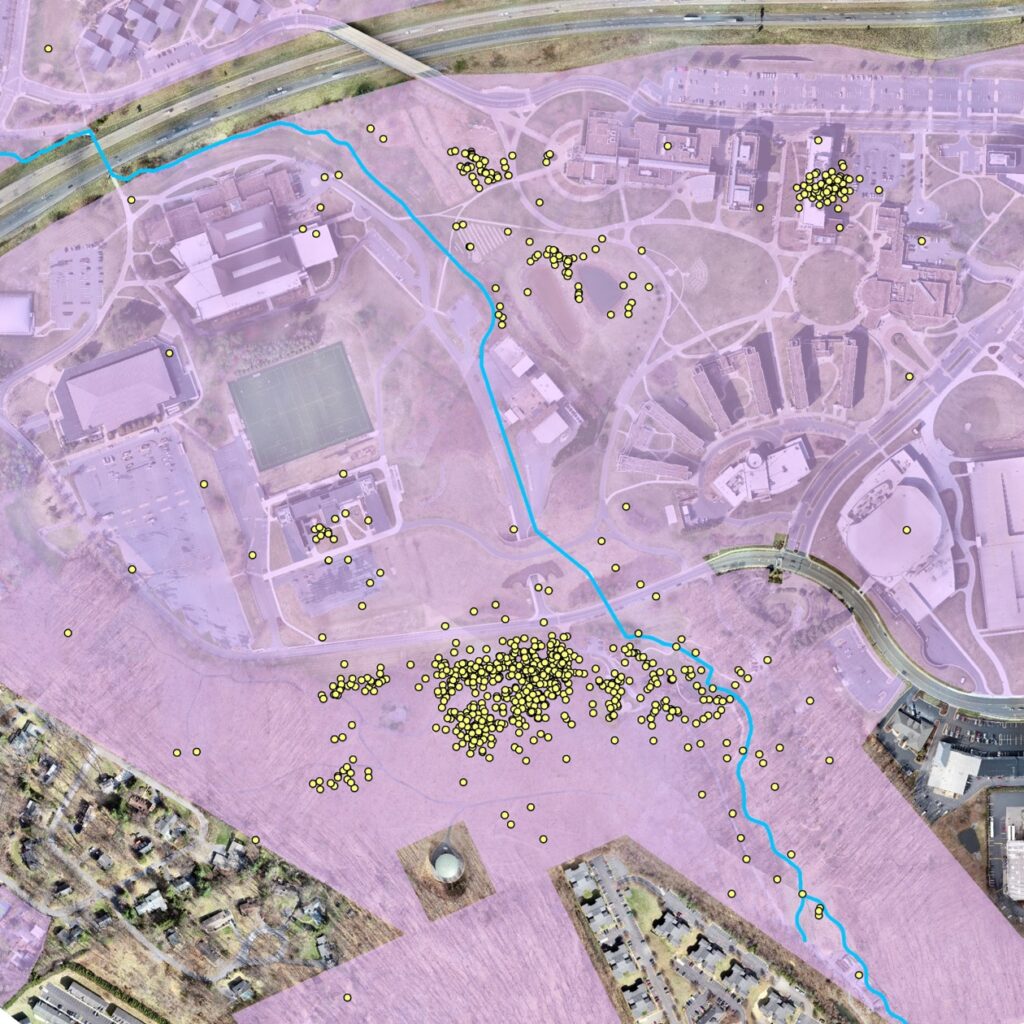
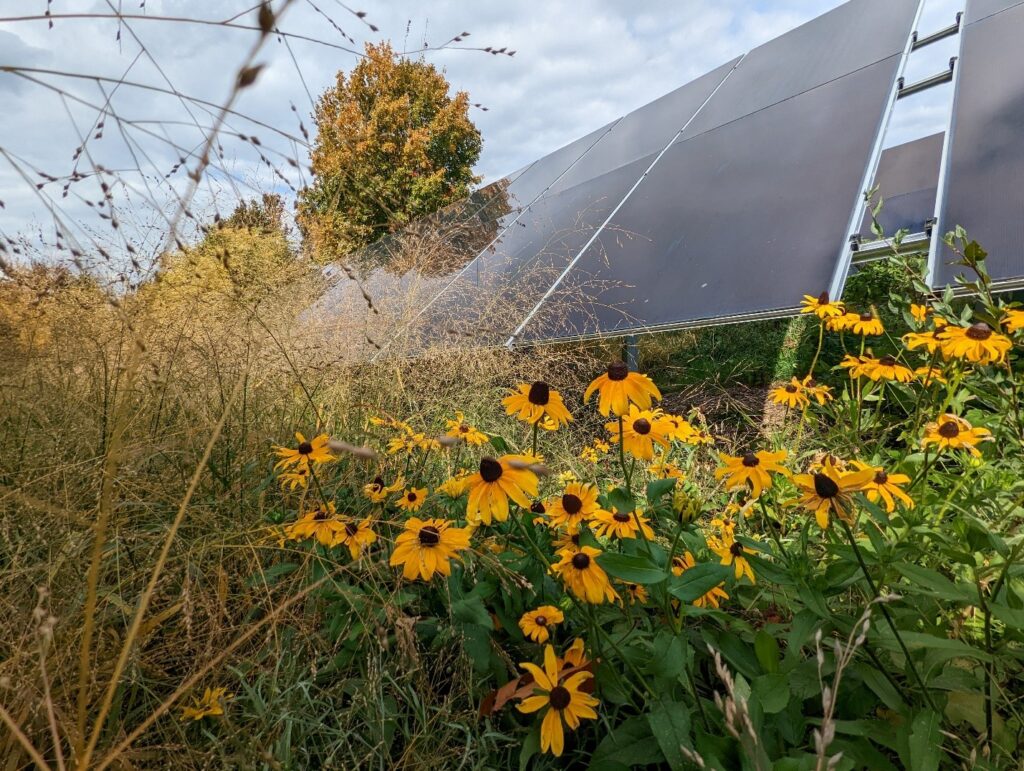
The creation of pollinator habitat on campus continues to expand opportunities for engaged student learning. New pollinator habitat is in the process of being developed on campus where a small solar array was updated and expanded. Staff in Facilities Management received a grant for the project from the Department of Energy. With the grant, instead of returning the groundcover back to turf grass, the areas between the solar panels were planted with a native pollinator mix to create an additional 11,326 square feet of native meadow. The native plants were selected for their value to pollinators as protective cover, an important food source, and as nesting habitat. Facilities Management staff had to also consider native plants that were shorter in height to prevent shading out the solar panels and decreasing their efficiency, and making sure the native plants selected were shade tolerant as they would be growing in a 10-foot-wide aisle between the solar arrays. This year, JMU staff will plant another 6,000 square feet of pollinator meadow in the open space available inside of the solar facility.
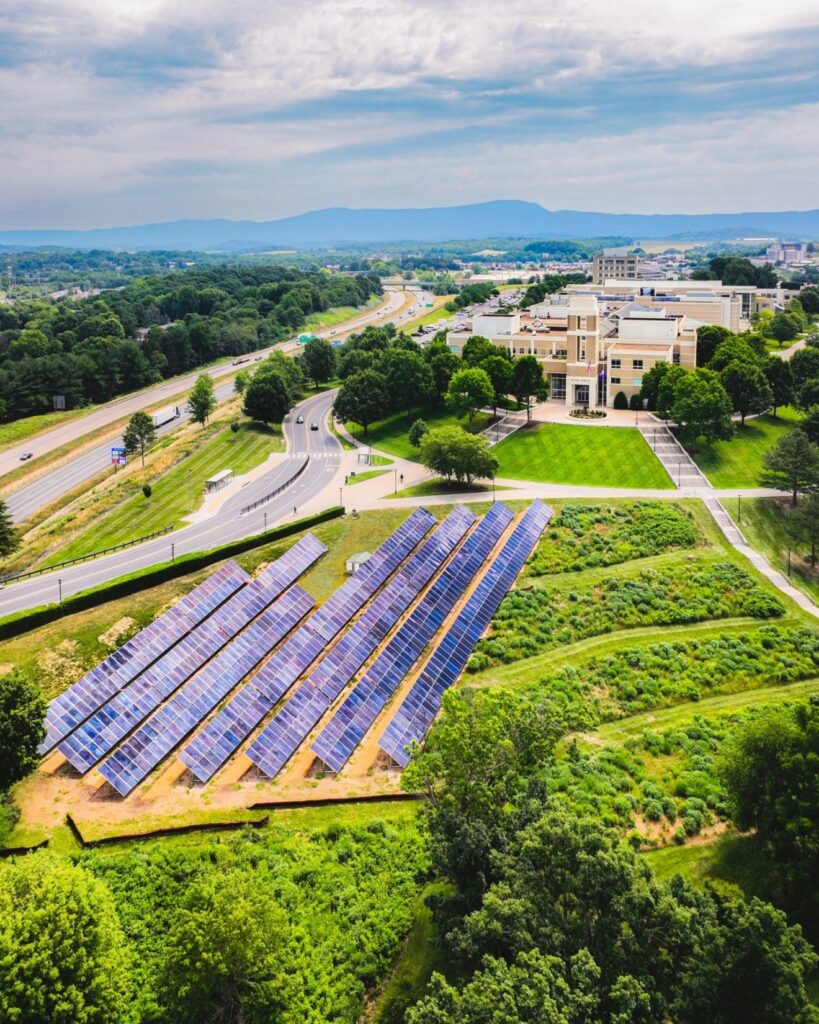
As part of this solar project, the Bee Campus Committee is in the process of developing a Vegetation Management Plan (VMP) as part of an effort to certify JMU’s solar facility as a Virginia Pollinator Smart Solar Site. The Virginia Pollinator-Smart Program was developed by two Virginia state agencies (Department of Conservation and Recreation and Department of Environmental Quality) to encourage pollinator friendly solar energy developments throughout the Commonwealth. The VMP, is a requirement for the application. The plan is being developed with input from a local environmental consulting firm, Wild Ginger Field Services. Wild Ginger completed the initial field vegetation assessments and created permanent survey and photo stations that JMU faculty, staff and students will continue to use to monitor the diversity and health of the solar facility’s pollinator habitat each growing season. Once certified, the annual vegetation surveys will be submitted to the Pollinator-Smart program to maintain JMU’s certification. Another exciting part of this initiative, the Bee Campus Committee is currently working on updating and adding educational signage around the facility and installing native bee houses and bird houses to further provide opportunities for students to apply the knowledge they learn in pollinator related coursework.
JMU’s Bee Campus program takes pride in knowing that students are gaining pollinator knowledge and are being equipped to advocate for pollinators on and off campus. Even after students graduate, the knowledge and engaged learning experiences they have had at JMU will transfer on to their work places and homes with simple tools like knowing how to: identify native plants and pollinators, create pollinator habitat, build native bee houses and advocate for pollinators in their local communities.






